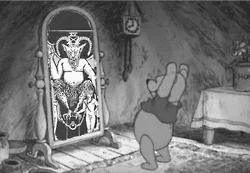I’ve very stubbornly steered clear of astrophotography as a hobby, because daaaamn, it’s expensive.
You’re not helping ![]()
I’ve very stubbornly steered clear of astrophotography as a hobby, because daaaamn, it’s expensive.
You’re not helping ![]()

Living in a big city with a lot of light pollution helps keeping my astronomical urges at bay.
You are right. For good photos, one must buy tons of gadgets, cameras, lens… And It will be never enough.
I cannot afford this lifestyle too.
I am starting to read how to stack photos. All the cool YouTube/forum kids say It is the best/only way to get nice pictures of the Moon/stars
Stacking frames is good for getting rid of random noise in your digital camera, if you cannot chill your camera. Since a lot of noise in an electronic camera is gaussian the frame stacking will eliminate up to 50% of the noise with each stacked frame, and you can do it in photoshop.
Thanks. Good to know. All the proccesses I’ve researched were way too complicated for me. It looked like esoteric hippie chic rituals. You should do this, must apply this, sacrifice a virtual goat.
Do you think It is possible to do It with Gimp? I mean, without sacrifices?

Maybe? I don’t know about gimp.

I want to believe this, but not so sure
I’m no artist, but I got into sketching. Mostly as a tool to help me slow down and really pay attention to what I was seeing - the arrangement of red stars and blue stars, the swirling patterns in the nebulae, etc. But also because I was wondering about astrophotography, and then read a blog about astronomical sketching. It said, a bit cheekily: “Warning: if you really get into sketching, it can cost dozens of dollars.”
A separate blog about sketching: this guy is in my astronomy club. Lovely guy, too.
ETA: one of Alex’s amazing lunar sketches - this one a side-by-side of the same area at sunrise and sunset (lunar sunrise/set, not Earth’s).
Cara, que barato*!
I never imagined that anyone made astronomical sketches. What a beautiful thing.
Although the astronomers of yesteryear made their own drawings, right?
*It is a compliment, it could be translated roughly as far out.
Although I started sketching to help myself slow down and appreciate the views more, I was surprised at how peaceful I feel out under the stars with my sketch pad and pencils.
I believe it was in the 1880s that the possibilities of photography in astronomy started to become apparent. A camera can see things a human eye can’t.
The [Horsehead] nebula was discovered by Scottish astronomer Williamina Fleming in 1888 on a photographic plate taken at the Harvard College Observatory.
I was also amazed at what beautiful things people still do with pencils and paper and telescopes.
Alternately, the microbes could have hitched a ride on high-velocity impact splash from giant meteor impacts on Earth.
Rocks have been found on Earth that are believed to have come from Mars. Earth has a deeper gravity well, so it would need a big splash.
Either way, when you find Lunar water, give it a really good boil before drinking.
I’ll run it through a coffee filter.
That’s where IceCube comes in. The observatory, based in Antarctica, is made of up of a billion tons of ice equipped with a grid of frozen-in sensors. The sensors light up when they detect a neutrino passing through, and, based on the sensors’ arrangement, researchers can determine the energy and direction of the neutrino that created the flash.
Or use a Life-jim-but-not-as-we-know-it Straw.
Maybe followed by a fermentation vat, with some honey and imported Earth yeast.
Happy Asteroid Day everyone!
The guest of honor, an iron-nickel representative, will be dropping in.